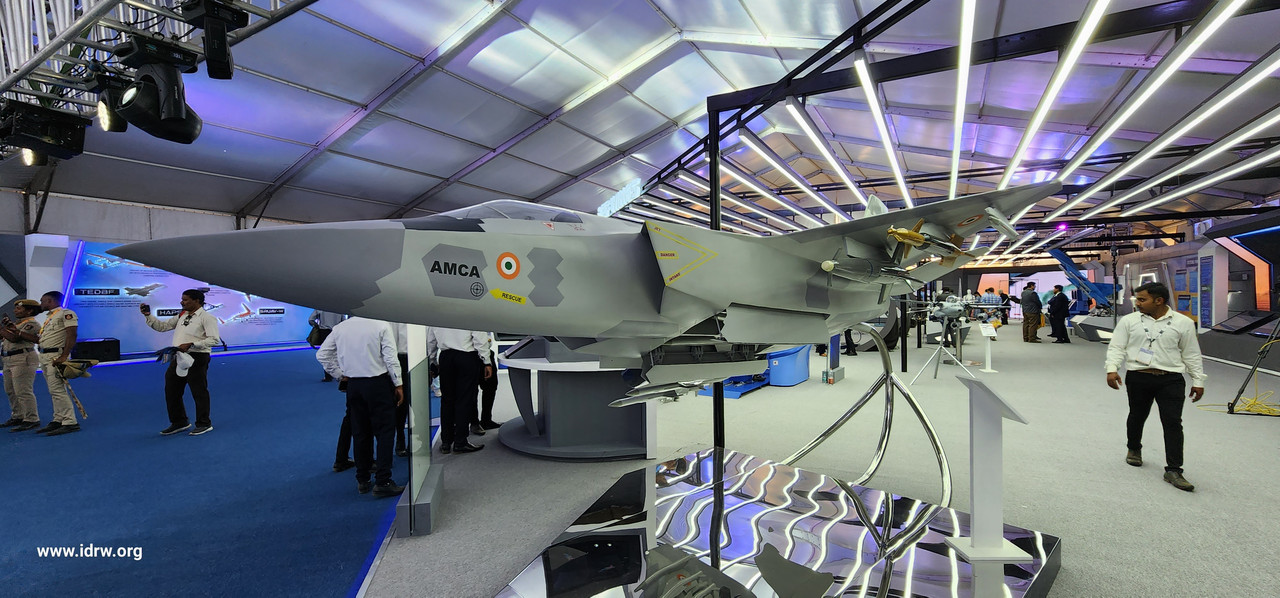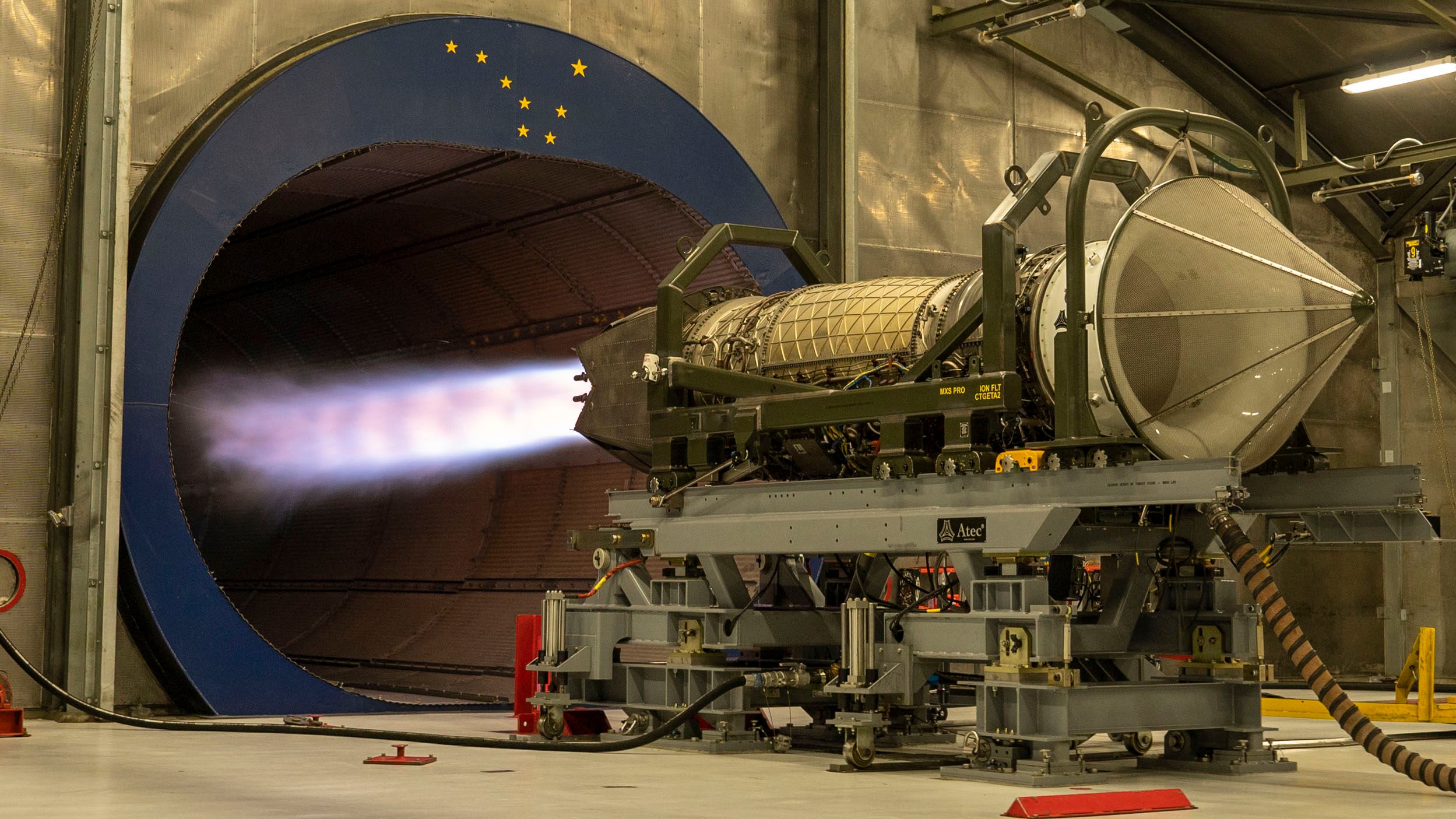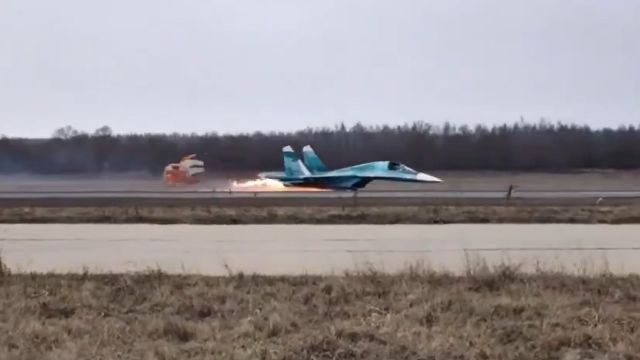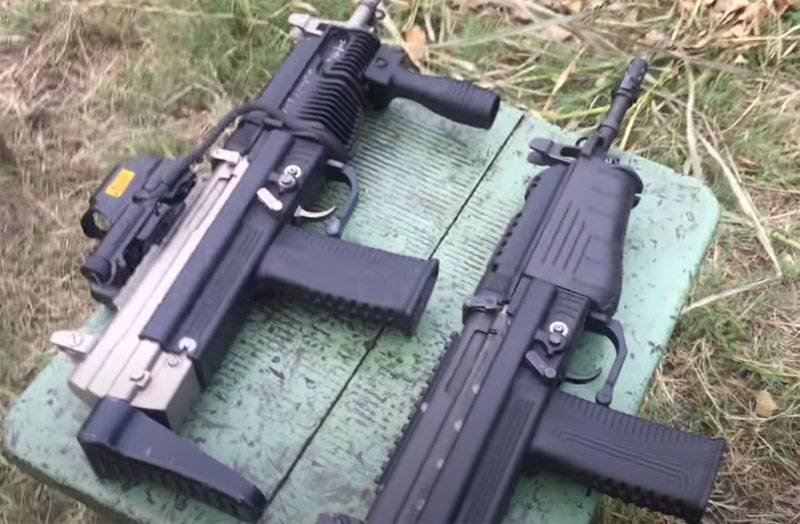SOURCE: AFI


Zeus Numerix, a pioneering Indian defence technology startup, has achieved a significant milestone in the realm of unmanned aerial vehicle (UAV) weaponization with the successful development and trial of its UAV-dropped munitions in the 3-25 kg class. Equipped with an in-house developed Ejector Rack Unit (ERU) as part of its UAV Weaponization Kit (UVW), this innovative system offers versatile configurations capable of carrying single or triple gravity-dropped munitions, with a maximum payload capacity of 55 kg. The Indian Army closely monitored the recently completed trials, underscoring the strategic importance of this advancement for India’s military modernization efforts.
The ERU supports multiple configurations: a single munition or a triple-munition setup, with a total payload capacity of up to 55 kg. Zeus Numerix has developed six distinct munition types, ranging from 2 kg to 25 kg, catering to diverse operational needs—from small-scale tactical strikes to larger, high-impact missions. These munitions are gravity-dropped, relying on the ERU’s precision release mechanism to ensure accurate delivery to targets.
Continue readingSOURCE: AFI

Digital Combat Simulator (DCS) World, a premier flight simulation platform developed by Eagle Dynamics, has captivated aviation enthusiasts and gamers with its high-fidelity aircraft modules, realistic physics, and immersive combat scenarios. Featuring a diverse roster of aircraft—from the American F-16C Viper to the Russian MiG-29 and even vintage warbirds like the P-51 Mustang—DCS World thrives on its detailed recreations of military hardware. Yet, despite its global appeal and the growing prominence of India’s indigenous Light Combat Aircraft (LCA) Tejas, this unique fighter jet remains conspicuously absent from the DCS module lineup. While there is significant interest from the DCS community in seeing a Tejas module, several practical, technical, and strategic factors explain its exclusion.
The LCA Tejas, designed by India’s Aeronautical Development Agency (ADA) and manufactured by Hindustan Aeronautics Limited (HAL), is a compelling candidate for DCS World. As a lightweight, single-engine, multirole fighter, it boasts a delta-wing configuration, advanced fly-by-wire controls, and a growing suite of modern avionics and weaponry, including the indigenous Uttam AESA radar and Astra missile. Its evolution from a replacement for aging MiG-21s to a 4.5-generation platform with variants like the Tejas Mk1A and the upcoming Mk2 makes it a fascinating study in modern aerospace design.
Continue readingSOURCE: RAUNAK KUNDE / NEWS BEAT / IDRW.ORG


The buzz surrounding sixth-generation fighter jets has reached a global fever, with the United States and China claiming early leads in this next frontier of air combat. However, an official from India’s Aeronautical Development Agency (ADA), speaking to idrw.org, has dismissed the excitement as “overhype,” arguing that even the frontrunners have yet to define what truly constitutes a sixth-generation platform.
With the ADA firmly focused on delivering the 5.5-generation Advanced Medium Combat Aircraft (AMCA) for the Indian Air Force (IAF), the official emphasized that India’s approach is pragmatic and competitive. It integrates advanced features that rival so-called sixth-generation innovations without chasing an ill-defined label.
Continue readingSOURCE: RAUNAK KUNDE / NEWS BEAT / IDRW.ORG


The unveiling of the Twin Engine Deck-Based Fighter (TEDBF) scale model by the Aeronautical Development Agency (ADA) at Aero India 2025 has sparked a fiery online debate: Is India’s next-generation naval fighter a copy of the French Rafale? The TEDBF’s sleek canard-delta configuration, twin engines, and overall silhouette bear an uncanny resemblance to Dassault Aviation’s Rafale, fueling speculation across forums, social media, and defence blogs.
While some hail it as a testament to convergent design evolution, others cry foul, accusing ADA of reverse-engineering the IAF’s Rafale fleet. An ADA official, speaking to idrw.org, has firmly dismissed these claims, shedding light on the design process, the Navy’s role, and the TEDBF’s distinct features—such as Diverterless Supersonic Inlets (DSI), wing-folding mechanisms, and a heftier 26-ton Maximum Takeoff Weight (MTOW)—that set it apart from its French counterpart.
Continue readingSOURCE: RAUNAK KUNDE / NEWS BEAT / IDRW.ORG


In a significant boost to India’s naval self-reliance, the Defence Research and Development Organisation (DRDO) has launched a mission mode project titled “Indigenous Development of Signal Flares (Green & Red) and Anti-Sonar Device (ASD) for Kalvari-Class Submarines” for the Indian Navy. This initiative aims to equip the Navy’s cutting-edge Kalvari-class (Scorpène-class) diesel-electric submarines with homegrown countermeasures and signaling systems, reducing dependence on foreign suppliers and enhancing operational autonomy.
The project’s scope encompasses the full spectrum of development, qualification, and delivery of naval signal flares—both green and red—and an anti-sonar device (ASD) tailored to the stealth and tactical needs of the Kalvari-class fleet. These submarines, built under Project-75 by Mazagon Dock Shipbuilders Limited (MDL) in collaboration with France’s Naval Group, form the backbone of India’s underwater warfare capabilities. With six boats planned—INS Kalvari, Khanderi, Karanj, Vela, Vagir, and the yet-to-be-commissioned Vagsheer—this initiative ensures that their defensive and operational systems align with the “Make in India” vision.
Continue readingSOURCE: AFI


The Indian Air Force (IAF) has tasked the Gas Turbine Research Establishment (GTRE) with developing a new engine for the Advanced Medium Combat Aircraft (AMCA), India’s ambitious fifth-generation stealth fighter. The IAF’s specific requirement is for an engine capable of delivering supercruise—a sustained supersonic flight without afterburners—at an altitude of 12 kilometers (H=12 km), a speed of Mach 1.3, and a dry thrust of 72 kN. This move underscores India’s determination to equip the AMCA with cutting-edge technology, aligning it with global benchmarks for fifth-generation fighters. However, the question remains: Is supercruise a universally desired criterion for modern fighter jets, and how does it stack up among existing fifth-generation platforms?
Supercruise, the ability to maintain supersonic speeds without the fuel-guzzling afterburner, offers significant tactical advantages. It enhances fuel efficiency, extends combat range, and reduces the infrared signature, making the aircraft harder to detect. For the AMCA, achieving supercruise at Mach 1.3 (approximately 1,600 km/h at 12 km altitude) with a dry thrust of 72 kN would provide a strategic edge, particularly in India’s challenging operational environment, where high-altitude performance is critical. The IAF’s focus on this capability reflects its intent to ensure the AMCA can penetrate contested airspace and engage adversaries effectively while maintaining stealth and endurance.
Continue readingSOURCE: AFI


The recent unveilings of sixth-generation fighter jet programs by China and the United States have sent ripples through the global defense community, spotlighting the accelerating race for air superiority. In India, these developments have sparked a heated debate: should India join the UK-Italy-led Global Combat Air Programme (GCAP) as a partner, leveraging the same engine technology for its indigenous Advanced Medium Combat Aircraft (AMCA)? Such a move could position India alongside leading nations by 2035, when both its 5.5-generation AMCA and a collaborative 6th-generation fighter are slated for induction, avoiding the perennial trap of playing catch-up in military aviation.
China’s reveal of a tailless, stealth-oriented sixth-generation fighter prototype in October 2024, followed by the U.S. Air Force’s progress with its Next Generation Air Dominance (NGAD) program—highlighted by Boeing’s F-47 renderings—underscores the rapid evolution of air combat technology. These jets promise unprecedented stealth, AI-driven autonomy, and networked warfare capabilities, leapfrogging the fifth-generation platforms like the F-35 and J-20 that currently dominate. For India, whose air force grapples with a shrinking squadron strength and aging fleets, the prospect of lagging further behind its rivals, particularly China, is a pressing concern.
Continue readingSOURCE: AFI


On March 22, 2025, a Russian Su-34 fighter-bomber made an extraordinary belly landing at an undisclosed airfield, an event captured in a striking video circulating widely on X. The footage reveals the twin-engine aircraft approaching the runway with its landing gear retracted, relying entirely on its underside to touch down. What could have been a catastrophic failure instead became a testament to the pilot’s skill and the jet’s robust design, as it skidded to a controlled stop with sparks flying but no apparent structural collapse.
The video shows the Su-34, a frontline fighter-bomber designed by Sukhoi, descending smoothly despite the absence of its wheels. As it contacted the pavement, the aircraft’s underside scraped along the runway, generating a shower of sparks. Remarkably, the crew deployed its drag parachutes at precisely the right moment, slowing the jet’s momentum and bringing it to a clean halt—almost as if it had executed a conventional landing. The canopy was jettisoned mid-flight or post-landing, likely to facilitate a swift evacuation, underscoring the crew’s preparedness for the emergency.
Continue readingSOURCE: AFI


India’s security forces have gained a formidable edge in their ongoing battle against Left-Wing Extremism (LWE) with the deployment of the indigenously developed Joint Venture Protective Carbine (JVPC). Designed by the Defence Research and Development Organisation’s (DRDO) Armament Research and Development Establishment and manufactured by Advanced Weapons and Equipment India Limited (AWEIL), the JVPC has emerged as a game-changer in close-range combat, particularly in the dense jungles of Chhattisgarh where security personnel confront Naxal insurgents.
The JVPC was conceptualized to replace the outdated 9mm submachine guns previously used by Indian forces, introducing a unique 5.56 x 30mm calibre tailored for modern operational needs. Weighing just 2.98 kg, thanks to its lightweight polymer construction, the weapon combines portability with a high rate of fire and an effective range of 200 meters. Its design incorporates advanced features such as visible and invisible laser designators, silencers, and even bayonets, making it a versatile “beast” for close-quarters assaults.
Continue readingSOURCE: IDRW.ORG


Tata Advanced Systems Limited (TASL), a key player in India’s aerospace and defense sector, has unveiled its latest innovation: a cutting-edge Unmanned Ground Vehicle (UGV) Tracked, designed to enhance military and security operations.
This indigenous platform showcases TASL’s growing expertise in autonomous systems, reinforcing its role as a leader in India’s “Make in India” defense ecosystem. With versatile features and robust specifications, the UGV Tracked promises to meet a wide range of operational needs, from logistics support to frontline combat assistance.
Continue readingSOURCE: IDRW.ORG


The Indian Navy remains steadfast in its pursuit of a second Indigenous Aircraft Carrier (IAC-II), despite speculation that its ambitions have been overshadowed by the Ministry of Defence’s (MoD) prioritization of nuclear-powered attack submarines (SSNs). Reports from idrw.org, citing naval sources, confirm that efforts are underway to secure final approval from the MoD for the construction of IAC-II, a near-identical successor to the recently commissioned INS Vikrant (IAC-I). Far from abandoning its carrier plans, the Navy is pushing to expedite the project, unwilling to delay orders until 2030 as initially projected.
The IAC-II, envisioned as a 45,000-tonne conventionally powered flattop, is a critical component of the Navy’s long-term goal to operate a three-carrier fleet—ensuring two are operational at any given time while one undergoes maintenance. However, recent developments, including the MoD’s clearance in January 2025 for constructing two SSNs under a ?40,000 crore program, sparked media speculation that the Navy had been directed to shift focus away from aircraft carriers. Sources close to the Navy have debunked these claims, asserting that the service remains committed to both programs, viewing them as complementary rather than mutually exclusive.
Continue readingSOURCE: AFI


Nearly 15 years after its initial proposal, the Indian Army’s ambitious Future Main Battle Tank (FMBT) program remains in limbo, with the General Staff Qualitative Requirements (GSQR)—a critical document outlining the tank’s detailed specifications—yet to be issued. Conceived as a next-generation replacement for the aging fleet of Soviet-era T-72 Main Battle Tanks (MBTs), the FMBT was envisioned to modernize India’s armored forces and bolster its combat capabilities. However, prolonged delays in finalizing requirements have left the project stalled, raising questions about the Army’s preparedness for future conflicts.
The FMBT initiative traces its origins to 2010, following the successful trials of the indigenous Arjun Mk1 tank against the Russian T-90 in Rajasthan. Buoyed by this achievement, the Defence Research and Development Organisation (DRDO) proposed the development of a cutting-edge tank to succeed the T-72s, which have been the backbone of India’s armored corps since the 1980s. The Army currently operates around 2,400 T-72s, many of which have exceeded their 30-year service life and are increasingly obsolete in the face of modern warfare’s demands. The FMBT was intended to address these shortcomings, promising advanced features like active protection systems, enhanced mobility, and network-centric capabilities.
Continue readingSOURCE: AFI


SSS Defence, a premier Indian defence weapon systems company, has established itself as a key player in the manufacturing of small arms, ammunition, and high-end optics for military and law enforcement applications. Backed by a 70-year legacy of manufacturing expertise through its parent company, Stumpp Schuele & Somappa Springs, SSS Defence has consistently pushed the boundaries of innovation in India’s private defence sector.
In a recent development that has caught the attention of defence enthusiasts and analysts alike, the firm appears to be working on a stand-alone grenade launcher, a project that was inadvertently showcased, sparking intrigue about its potential capabilities and implications.
Continue readingSOURCE: AFI


In a landmark decision for India’s space program, the Central Government has granted approval to the Indian Space Research Organisation (ISRO) for its ambitious Mars Lander Mission, officially known as Mangalyaan-2. This approval marks a significant step forward in India’s quest to expand its interplanetary exploration capabilities and solidify its position among the world’s leading spacefaring nations. Building on the success of the Mars Orbiter Mission (MOM), or Mangalyaan-1, which made India the first Asian country to reach Martian orbit in 2014, Mangalyaan-2 aims to achieve an even more challenging feat: landing a spacecraft on the Red Planet.
The approval, announced on March 22, 2025, follows the Space Commission’s endorsement of the mission on February 21, 2025, and reflects the government’s commitment to advancing India’s space ambitions. Unlike its predecessor, which was an orbiter mission designed to study Mars from above, Mangalyaan-2 is poised to take India’s exploration efforts to the surface of Mars. The mission is expected to include a lander and a rover, with potential plans for a pioneering Martian helicopter, making it one of ISRO’s most complex undertakings to date.
Continue readingSOURCE: AFI


In a significant step toward deepening military cooperation, India and Armenia have initiated discussions on conducting joint training for their Special Forces. This move comes alongside Armenia’s plans to procure loitering munitions from India to equip its elite Spetsnaz detachments, signaling a strengthening partnership between the two nations. The collaboration is poised to enhance Armenia’s military capabilities, particularly in mountainous warfare, while fostering a strategic counterbalance to regional geopolitical alignments, notably the Azerbaijani-Turkish-Pakistani axis.
As part of the proposed training initiative, Armenia’s Spetsnaz detachments and mountain servicemen could be deployed to India’s High Altitude Warfare School (HAWS) in Jammu & Kashmir. Nestled in the rugged Himalayas, HAWS is renowned for its rigorous mountain warfare training programs, making it an ideal venue for Armenian forces to hone their skills in terrain similar to their homeland’s treacherous mountains.
Continue reading